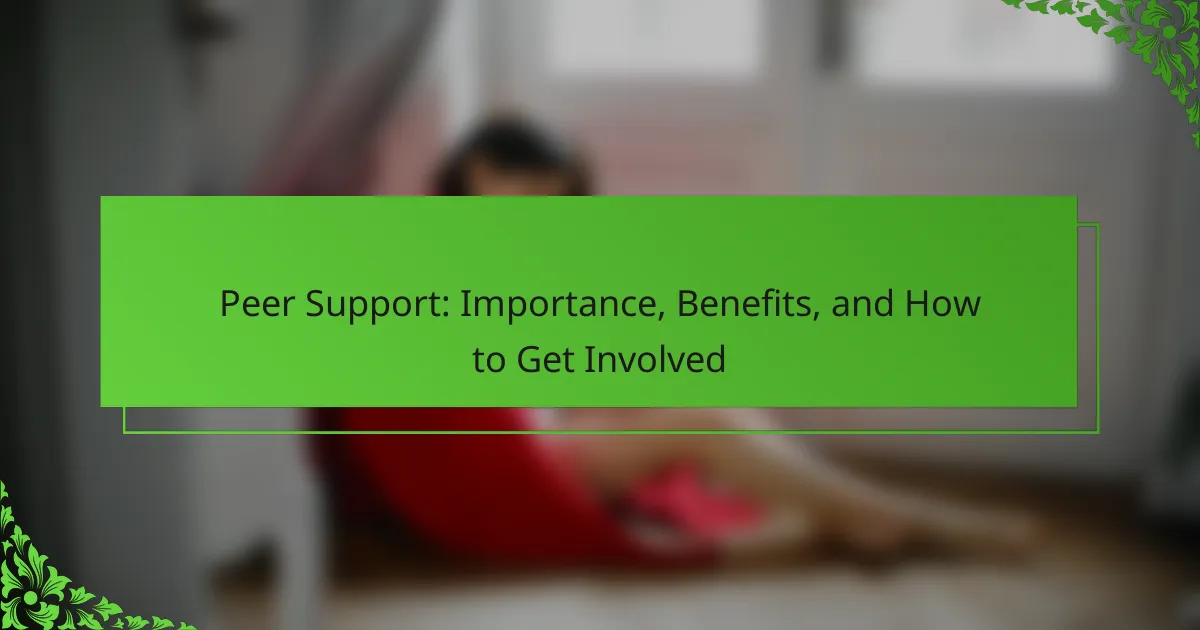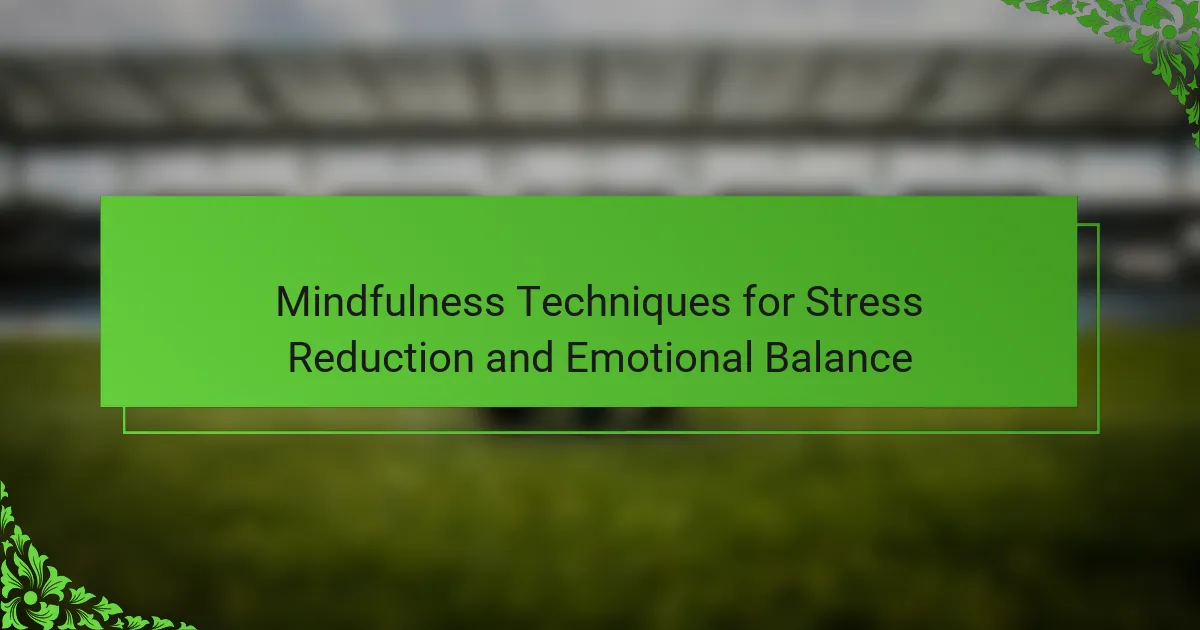Peer support enhances mental well-being and reduces isolation. It encompasses various forms, including support groups and online forums. Engaging in peer support fosters resilience and community connection. Challenges like stigma and resource limitations can affect its effectiveness.
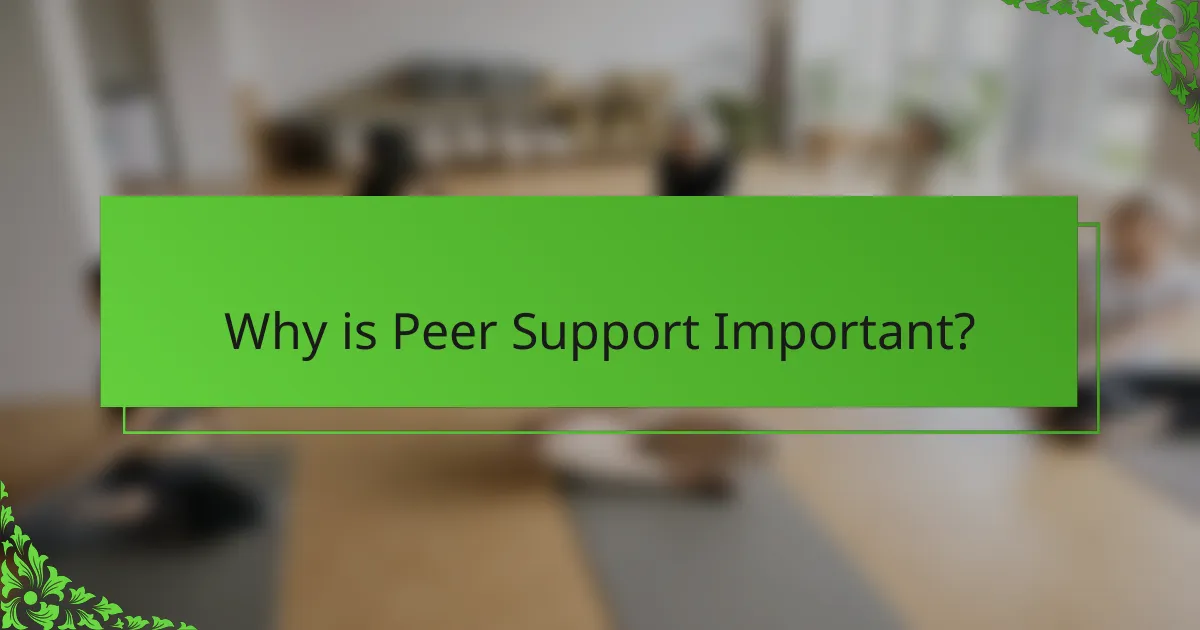
Why is Peer Support Important?
Peer support is crucial because it fosters connection, understanding, and shared experiences among individuals. This form of support enhances mental well-being, reduces feelings of isolation, and promotes resilience. Engaging in peer support can lead to improved coping strategies and a sense of community. Studies indicate that individuals involved in peer support programs report higher satisfaction and lower stress levels.
What Are the Psychological Benefits of Peer Support?
Peer support provides significant psychological benefits, including enhanced emotional well-being, reduced feelings of isolation, and improved coping strategies. Engaging with peers fosters a sense of belonging, leading to increased resilience and self-esteem. Studies show that individuals involved in peer support report lower levels of anxiety and depression, highlighting its effectiveness in promoting mental health. Peer support also encourages personal growth through shared experiences and mutual encouragement.
How Does Peer Support Enhance Community Resilience?
Peer support significantly enhances community resilience by fostering connections and shared experiences. It promotes emotional well-being, reduces isolation, and encourages collective problem-solving. Communities with strong peer support networks demonstrate increased adaptability in facing challenges. For instance, during crises, peer support can lead to faster recovery and a stronger sense of belonging. Engaging in peer support initiatives empowers individuals and strengthens community ties, ultimately leading to a more resilient society.
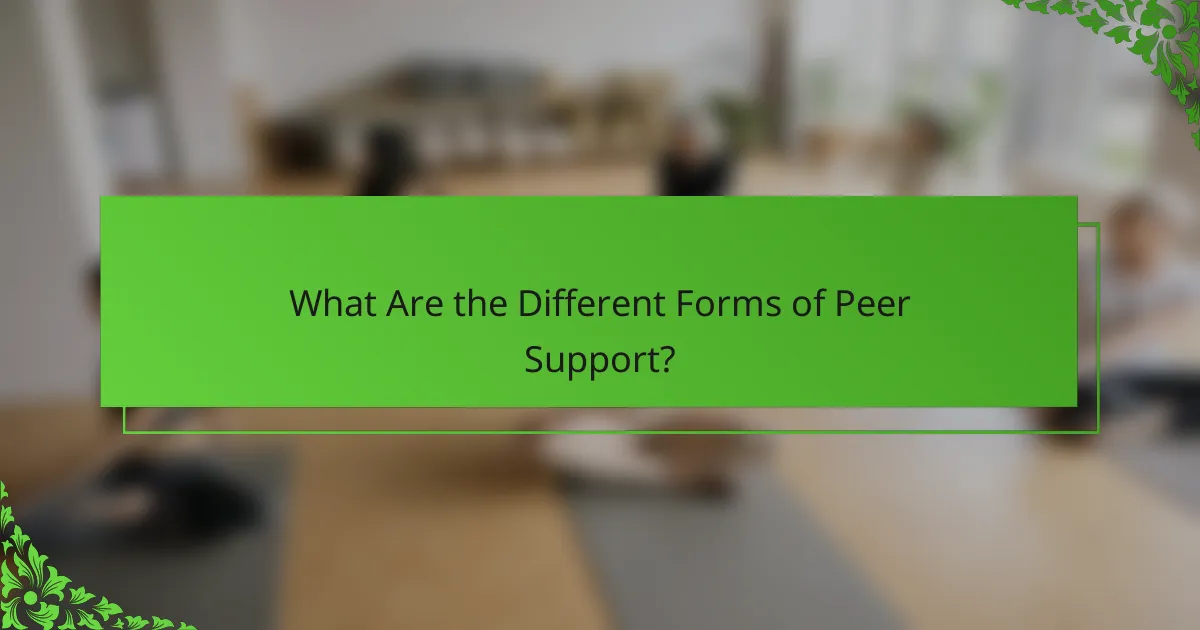
What Are the Different Forms of Peer Support?
Peer support can take various forms, each offering unique benefits. Common types include peer-led support groups, one-on-one mentoring, online forums, and community-based initiatives. These forms foster connection, provide emotional support, and enhance personal growth through shared experiences.
How Do Online Peer Support Groups Function?
Online peer support groups function by connecting individuals with shared experiences, fostering community and emotional support. Participants engage through various platforms, sharing insights and encouragement. These groups often operate via forums, social media, or dedicated apps, allowing for flexible participation. The anonymity of online settings can enhance openness, promoting candid discussions about challenges and coping strategies. Members typically benefit from feeling understood, reducing feelings of isolation while gaining practical advice and resources.
What Role Do In-Person Peer Support Meetings Play?
In-person peer support meetings play a crucial role in fostering connections and providing emotional support. They create a safe space for individuals to share experiences, reducing feelings of isolation. These meetings often lead to increased motivation and accountability among participants. Additionally, they facilitate the exchange of practical strategies for coping with challenges, enhancing personal growth.
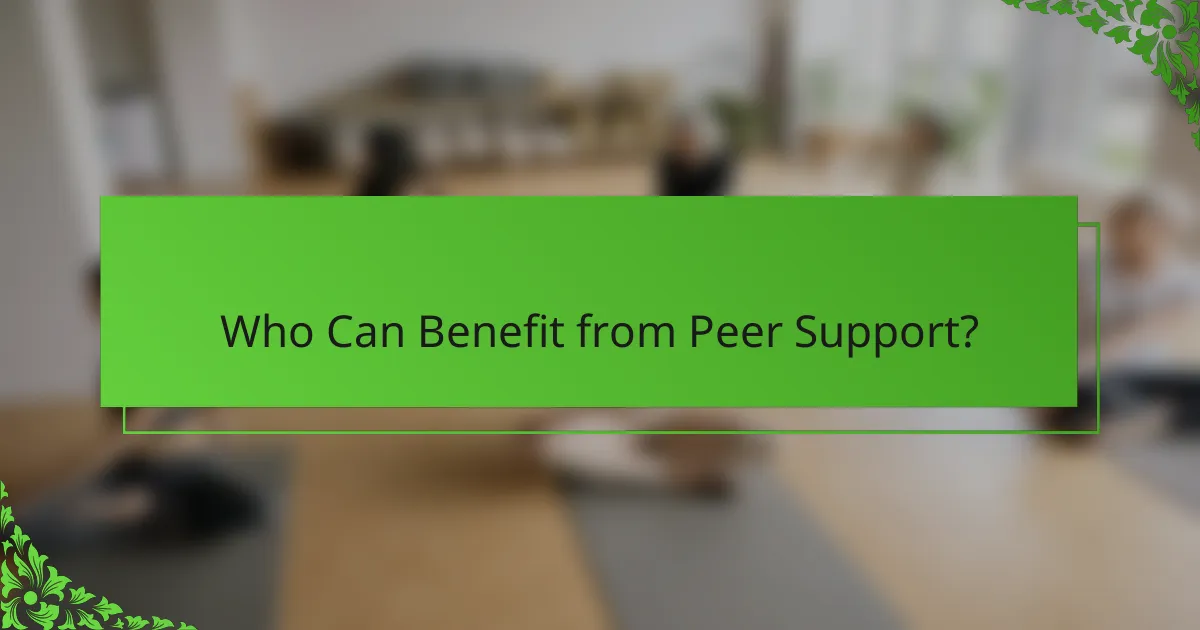
Who Can Benefit from Peer Support?
Individuals facing mental health challenges, caregivers, and those seeking personal growth can benefit from peer support. This approach fosters connection, shared experiences, and emotional understanding. Peer support enhances resilience and promotes a sense of belonging. Studies show that participants often report improved well-being and reduced feelings of isolation. Engaging in peer support can also empower individuals to take active roles in their recovery journey.
Which Populations Are Most Engaged in Peer Support?
Individuals with mental health challenges, chronic illnesses, and marginalized communities are most engaged in peer support. These groups often seek shared experiences and emotional understanding. Research indicates that peer support enhances well-being and reduces feelings of isolation. For example, a study showed that 70% of participants in peer support programs reported increased life satisfaction.
How Does Peer Support Impact Mental Health Recovery?
Peer support significantly enhances mental health recovery by providing emotional and practical assistance. Participants in peer support programs often experience increased resilience, reduced feelings of isolation, and improved coping strategies. Research indicates that individuals engaged in peer support report higher levels of hope and satisfaction in their recovery journey. Additionally, peer support fosters a sense of community, which can be vital for sustained mental health improvement. Engaging with peer support can be as simple as joining local groups, online forums, or community events focused on mental health.
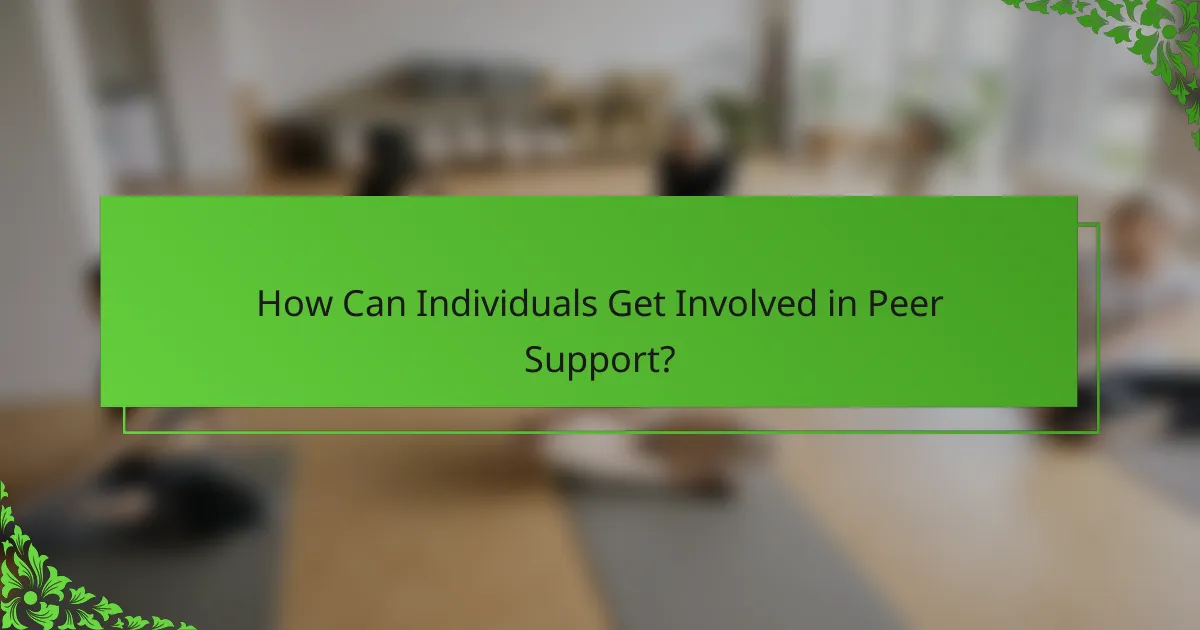
How Can Individuals Get Involved in Peer Support?
Individuals can get involved in peer support by joining local groups, attending workshops, or participating in online forums. Engaging with others in shared experiences fosters community and connection.
1. Join local peer support groups to meet in person.
2. Attend workshops or training sessions to enhance skills.
3. Participate in online forums for broader reach and support.
4. Volunteer to facilitate sessions or share personal experiences.
5. Advocate for peer support initiatives in your community.
What Steps Should You Take to Join a Peer Support Group?
To join a peer support group, follow these steps: identify your needs, research available groups, attend an introductory meeting, and engage with members.
1. Identify your needs: Understand the specific support you seek, such as mental health, addiction recovery, or chronic illness management.
2. Research available groups: Look for local or online peer support groups that align with your needs and preferences.
3. Attend an introductory meeting: Participate in a meeting to gauge the group’s environment and approach.
4. Engage with members: Build connections by sharing experiences and participating actively in discussions.
How Can You Become a Peer Support Volunteer?
To become a peer support volunteer, start by researching local organizations that offer peer support programs. Next, complete any required training to develop essential skills. Engage with the community to understand their needs and actively participate in support activities. Lastly, maintain ongoing communication with peers and supervisors for continuous improvement.
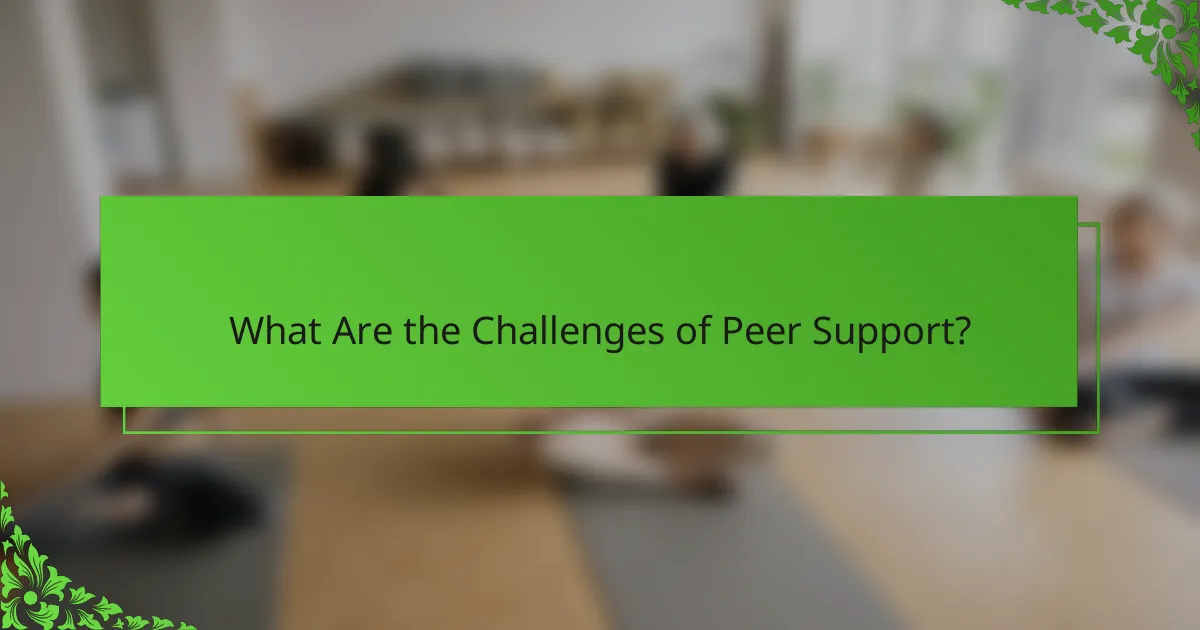
What Are the Challenges of Peer Support?
Peer support faces several challenges, including stigma, lack of resources, and varying levels of training among peers. These obstacles can hinder effective communication and support delivery. Stigma surrounding mental health can discourage individuals from seeking help. Limited funding often restricts the availability of peer support programs. Furthermore, inconsistent training levels can lead to disparities in the quality of support provided. Addressing these challenges is crucial for enhancing the effectiveness and reach of peer support initiatives.
How Do Boundaries Affect Peer Support Relationships?
Boundaries significantly enhance peer support relationships by fostering respect and trust. They help individuals communicate their needs and limits clearly, which can lead to healthier interactions. Establishing boundaries encourages accountability and prevents burnout, ensuring that support remains effective and sustainable. This clarity allows peers to engage more authentically, enhancing the overall impact of the support provided.
What Are Common Misconceptions About Peer Support?
Common misconceptions about peer support include the belief that it only involves emotional support, that peers lack the necessary skills, and that it is less effective than professional help. Many think peer support is only for those in crisis, overlooking its role in ongoing wellness. Additionally, some believe that peer supporters must have experienced the same issues, which is not always true. Peer support can enhance recovery and resilience through shared experiences, regardless of specific circumstances.
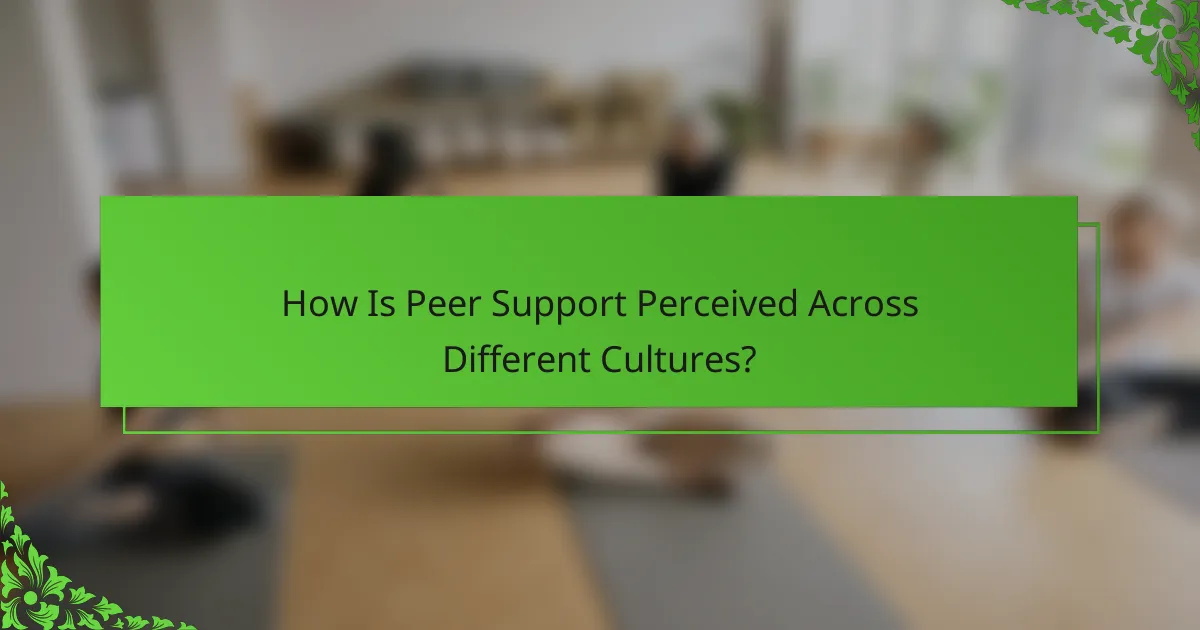
How Is Peer Support Perceived Across Different Cultures?
Peer support is perceived differently across cultures, reflecting diverse values and social structures. In collectivist societies, peer support often emphasizes community and familial ties, fostering strong networks. Conversely, individualistic cultures may focus on personal empowerment and self-reliance in peer support. Cultural attitudes towards mental health also shape perceptions; some cultures may stigmatize seeking help, while others encourage open dialogue. Understanding these nuances is crucial for effective peer support programs that resonate with various cultural backgrounds.
What Unique Approaches to Peer Support Exist in Various Regions?
Unique approaches to peer support vary across regions, reflecting cultural and social contexts. For instance, in Scandinavia, peer support often integrates mental health services with community engagement, fostering a collaborative environment. In contrast, Indigenous communities in North America emphasize traditional practices and storytelling as foundational elements of peer support. In urban areas of the United States, tech-driven platforms facilitate virtual peer support, enabling broader access. Meanwhile, in some Asian cultures, peer support may focus on familial involvement, highlighting the importance of close-knit relationships. Each approach showcases how local values shape the effectiveness of peer support systems.
How Do Cultural Attitudes Influence Participation in Peer Support?
Cultural attitudes significantly influence participation in peer support by shaping perceptions of mental health and community engagement. In cultures that prioritize collectivism, individuals may feel a stronger obligation to support one another, fostering higher participation rates. Conversely, cultures emphasizing individualism may see lower engagement due to stigma surrounding mental health issues.
Research indicates that communities with open discussions about mental health encourage more individuals to seek peer support. For example, a study found that in cultures where mental health is openly discussed, peer support participation increased by 40%. This highlights the importance of cultural context in shaping attitudes towards peer support initiatives.
Additionally, cultural norms around vulnerability and emotional expression can affect willingness to engage in peer support. In cultures where expressing emotions is viewed positively, individuals are more likely to participate. Understanding these dynamics can enhance the effectiveness of peer support programs by tailoring them to fit cultural contexts.
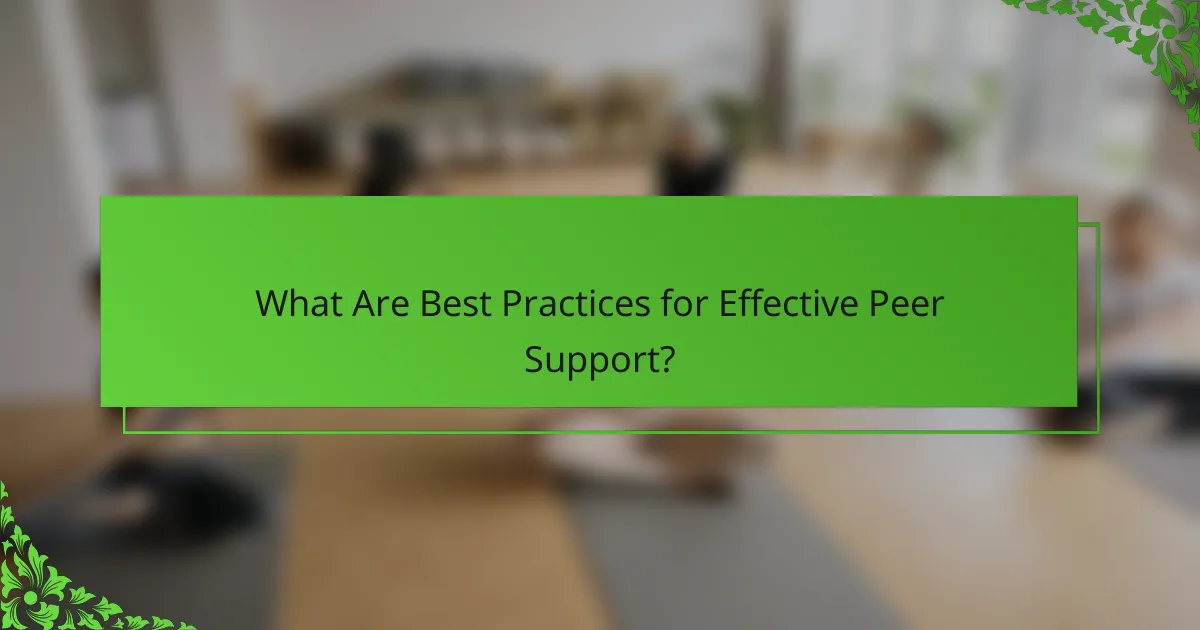
What Are Best Practices for Effective Peer Support?
Effective peer support involves sharing experiences, providing emotional assistance, and fostering a sense of community. Best practices include active listening, maintaining confidentiality, and offering encouragement. Additionally, training in communication skills enhances the support process. Engaging in regular check-ins helps maintain connections and provides ongoing support.
How Can You Foster Trust in Peer Support Relationships?
To foster trust in peer support relationships, prioritize open communication and active listening. Establishing a safe environment encourages sharing and vulnerability. Demonstrating empathy and reliability strengthens connections. Consistent follow-up and support further enhance trust over time.
What Strategies Enhance the Effectiveness of Peer Support Programs?
Effective peer support programs enhance their impact through clear training, structured guidelines, and ongoing evaluation. Training equips peers with essential skills, ensuring they provide valuable support. Structured guidelines establish boundaries and expectations, fostering a safe environment. Regular evaluations measure program effectiveness and identify areas for improvement, ensuring continuous growth and adaptability.
